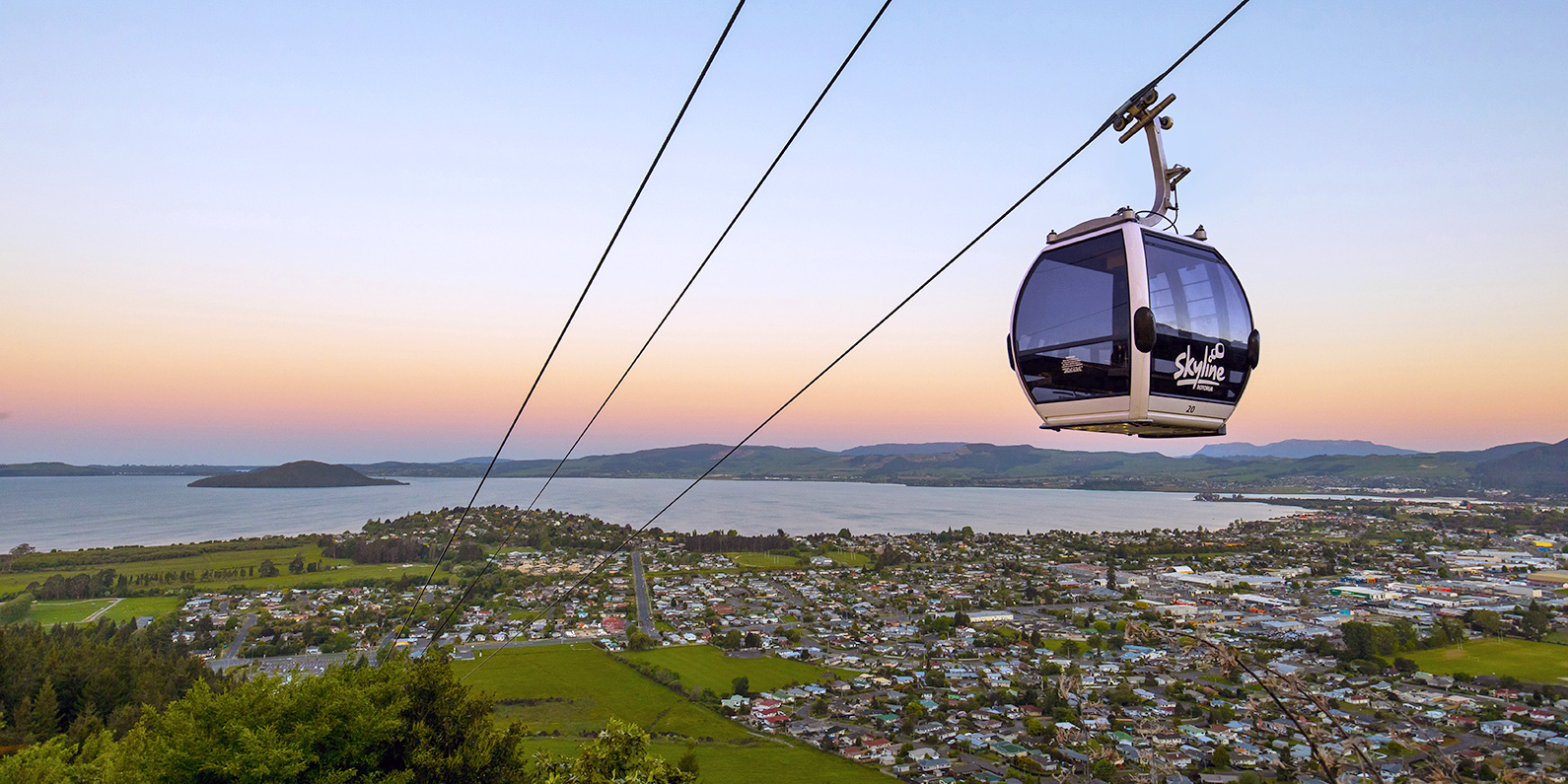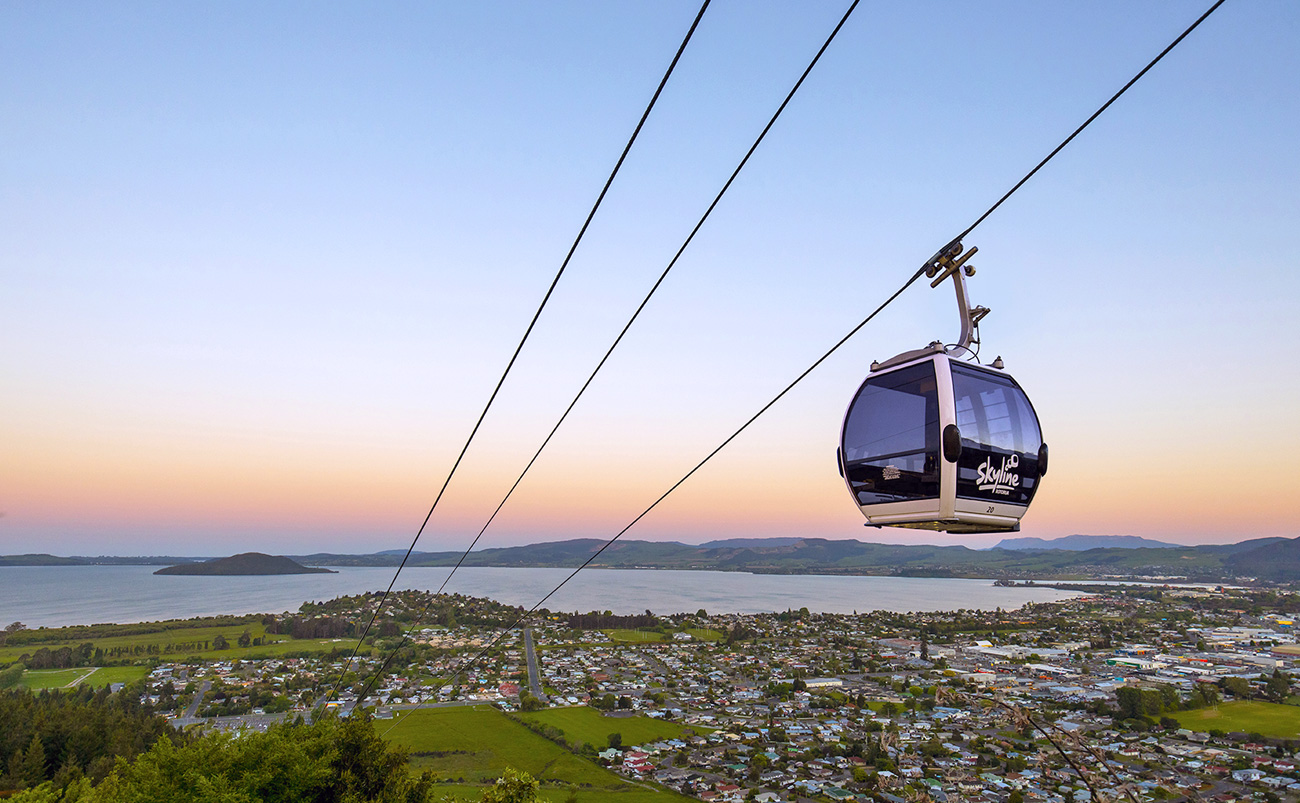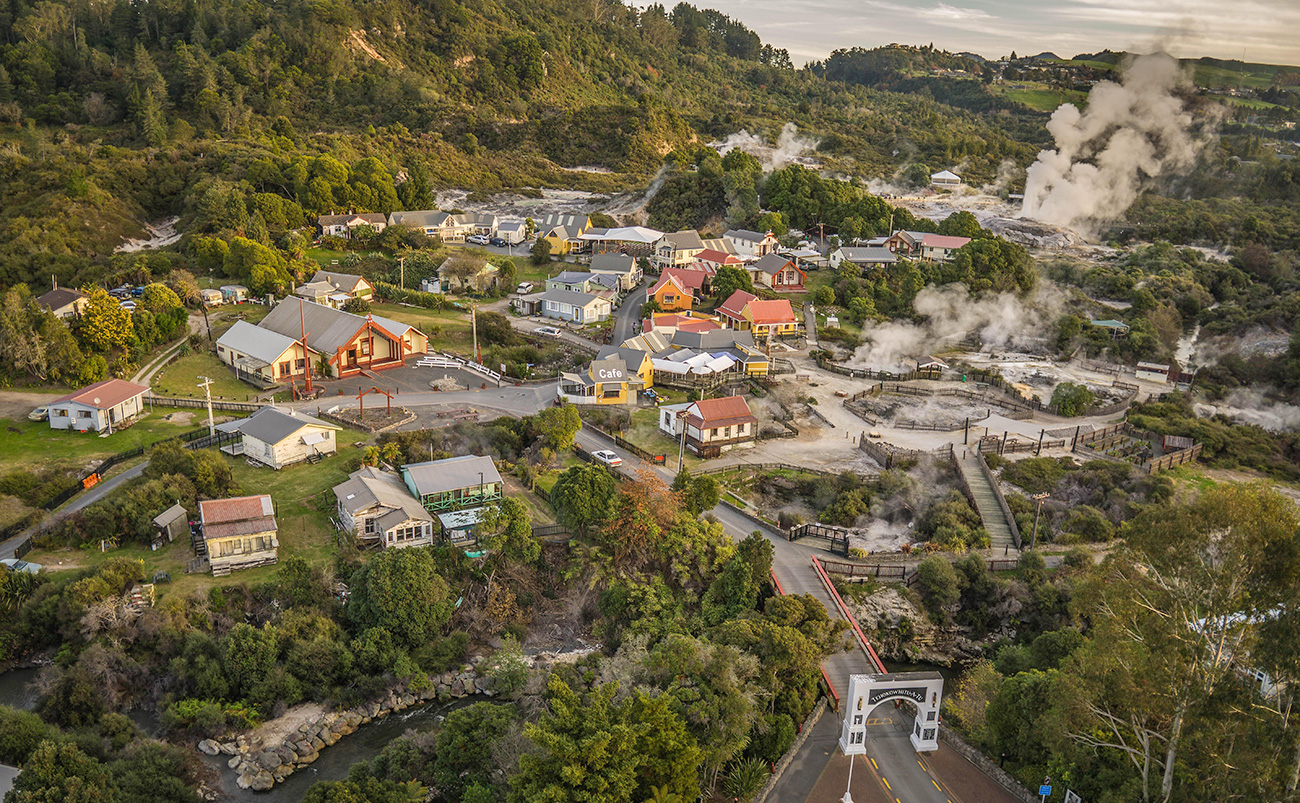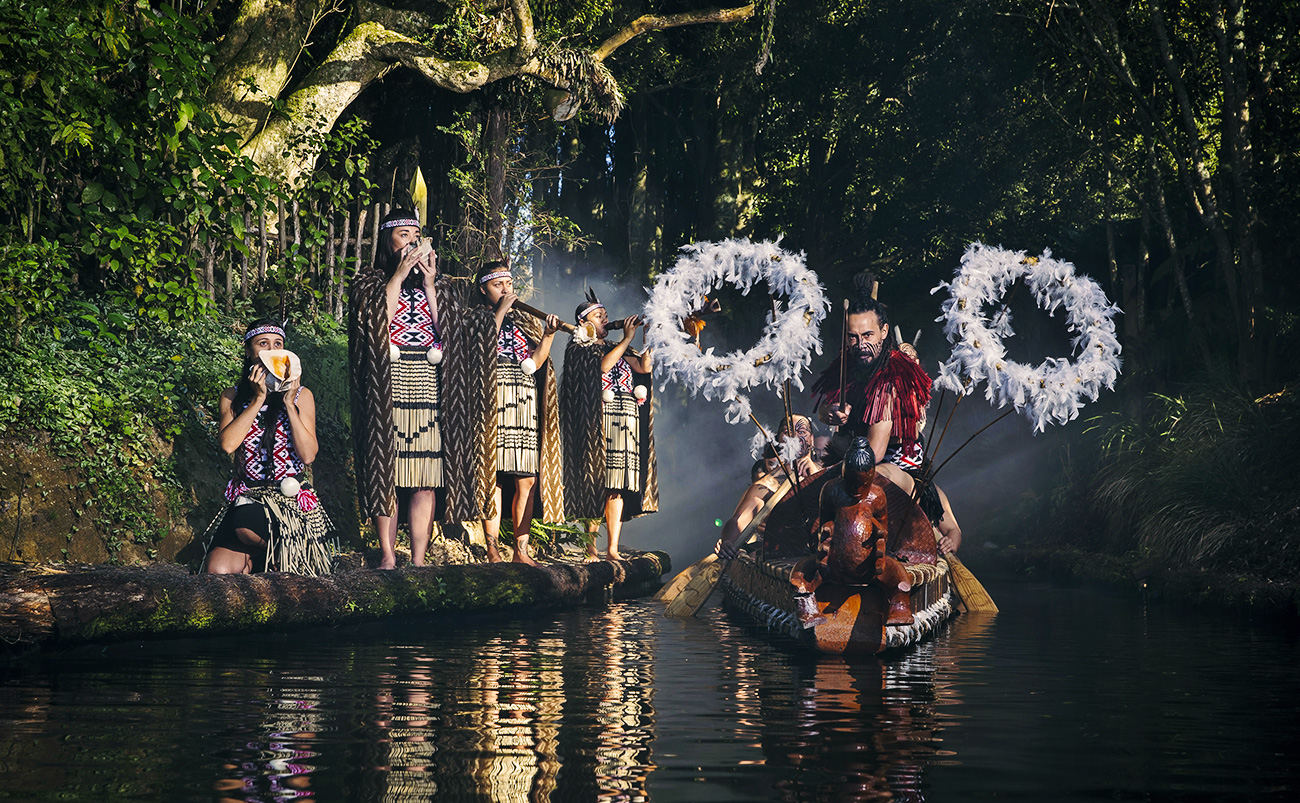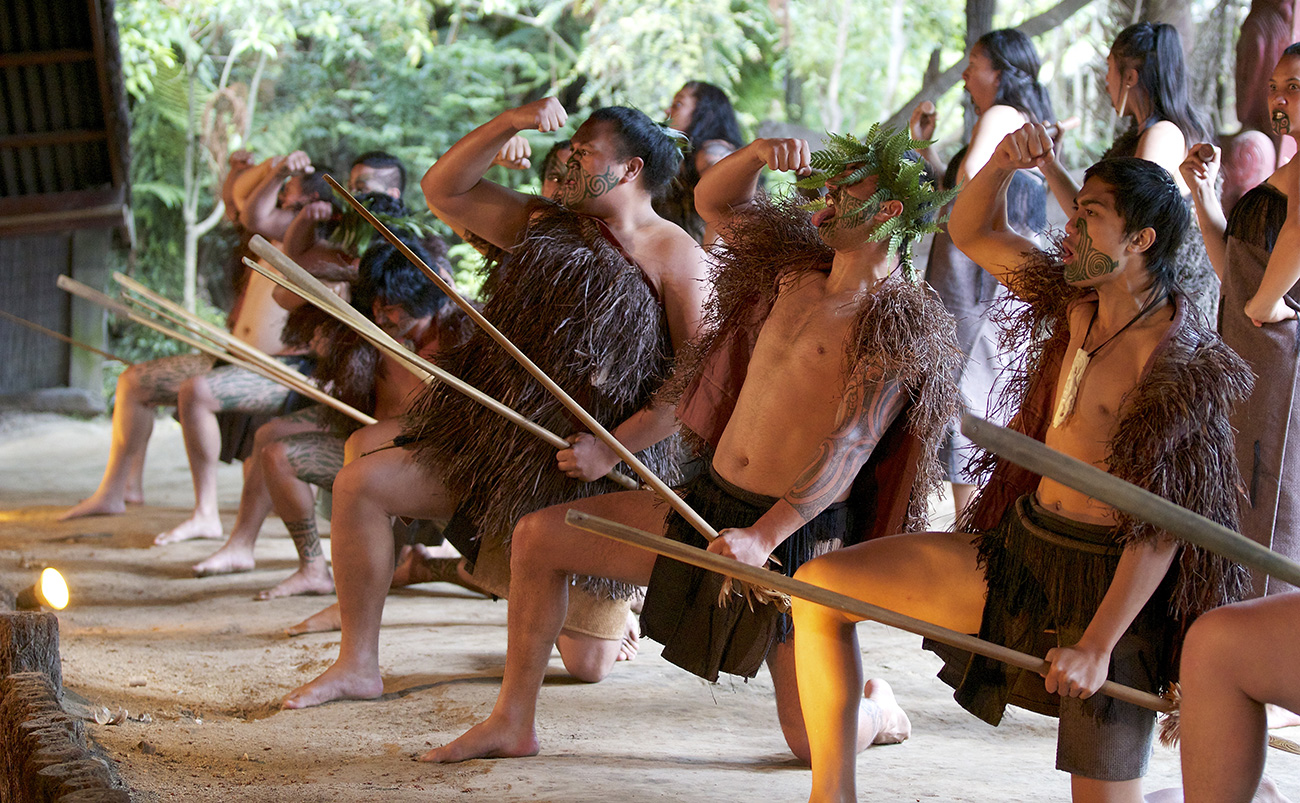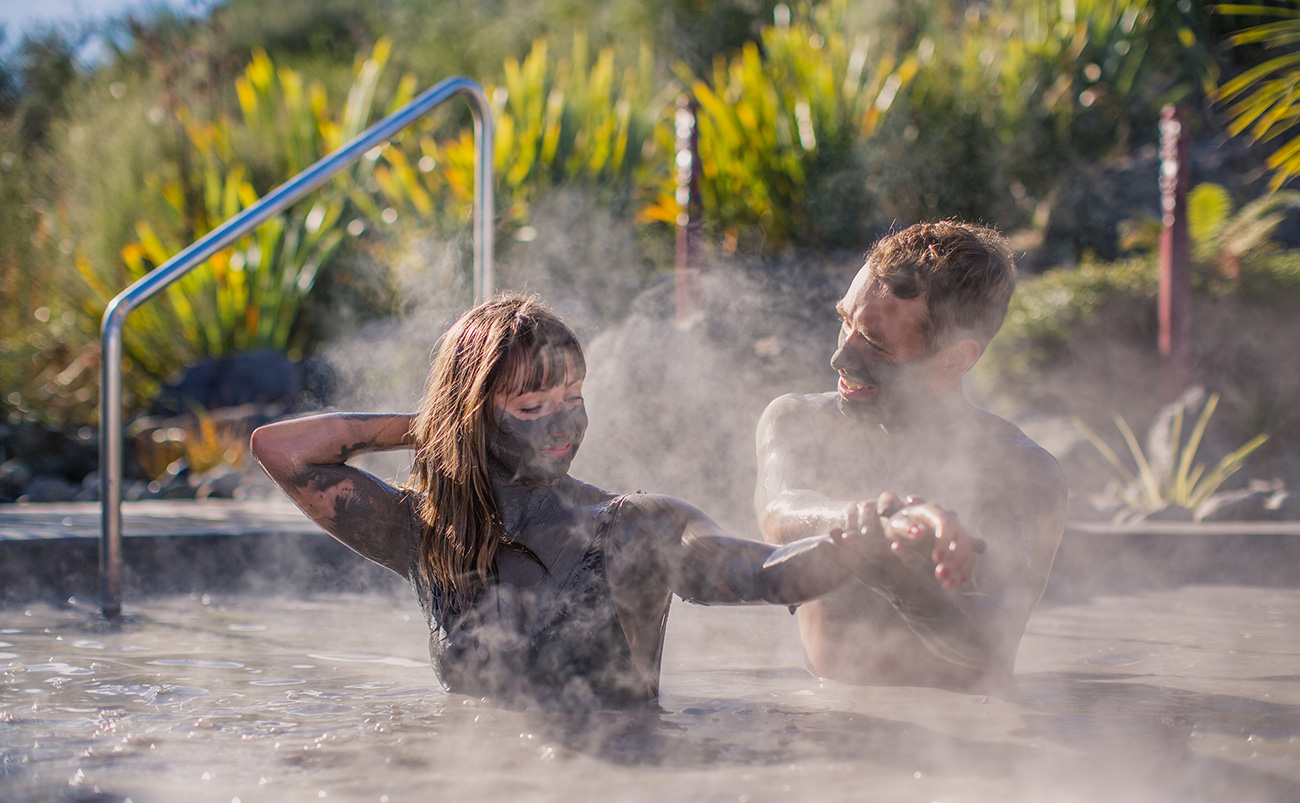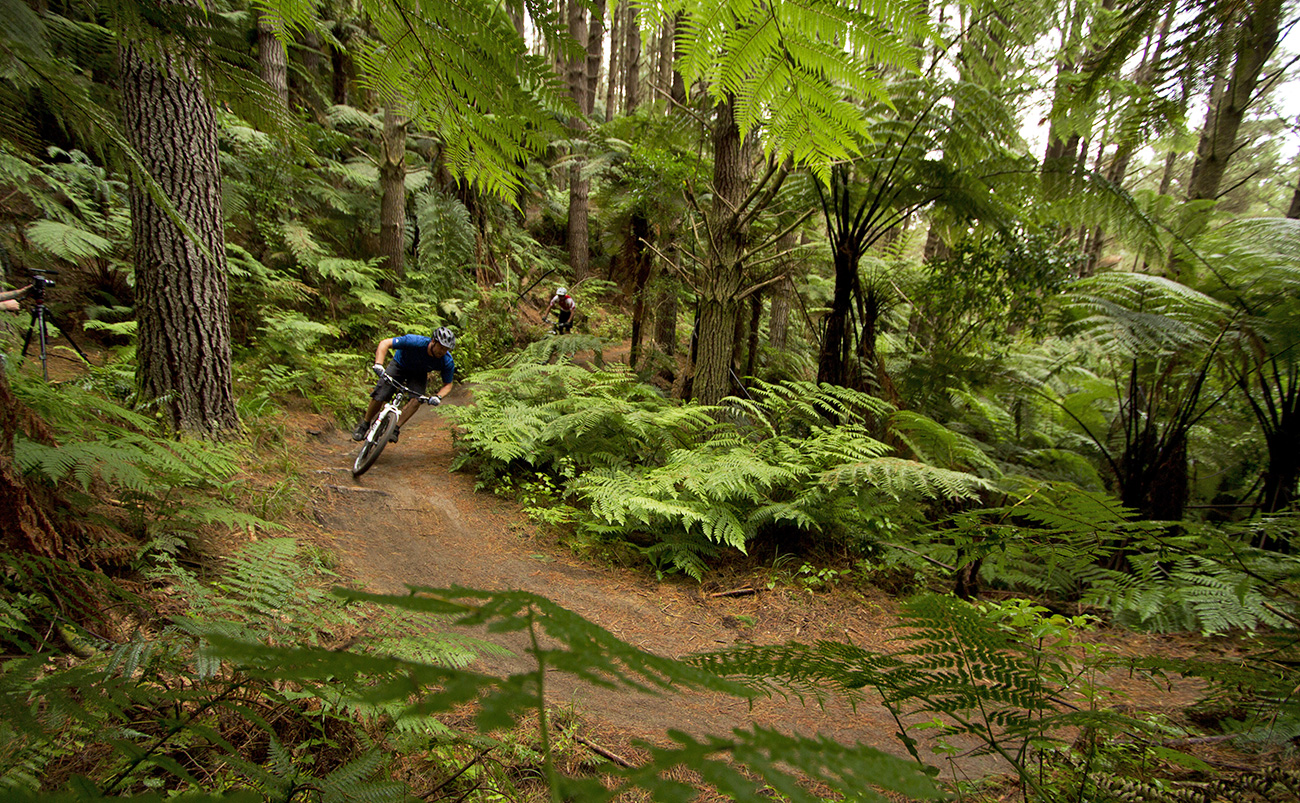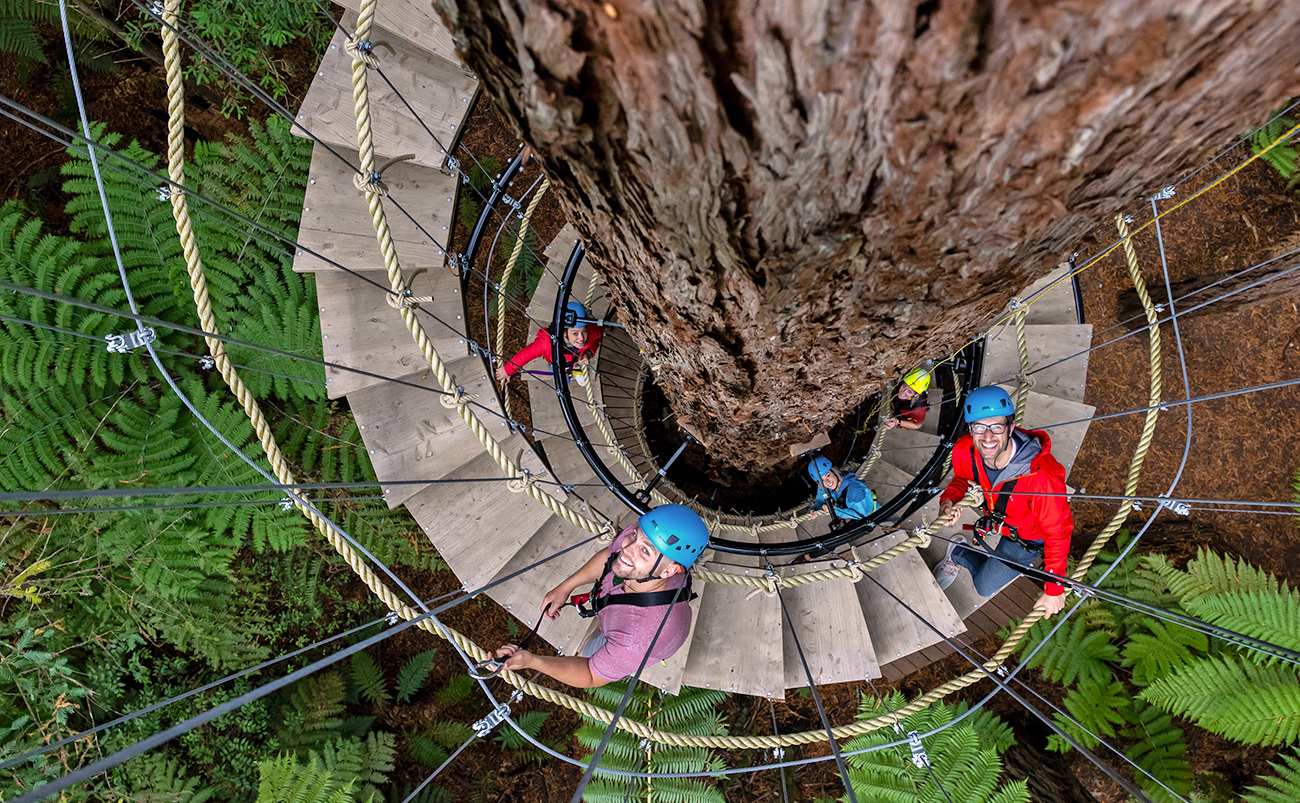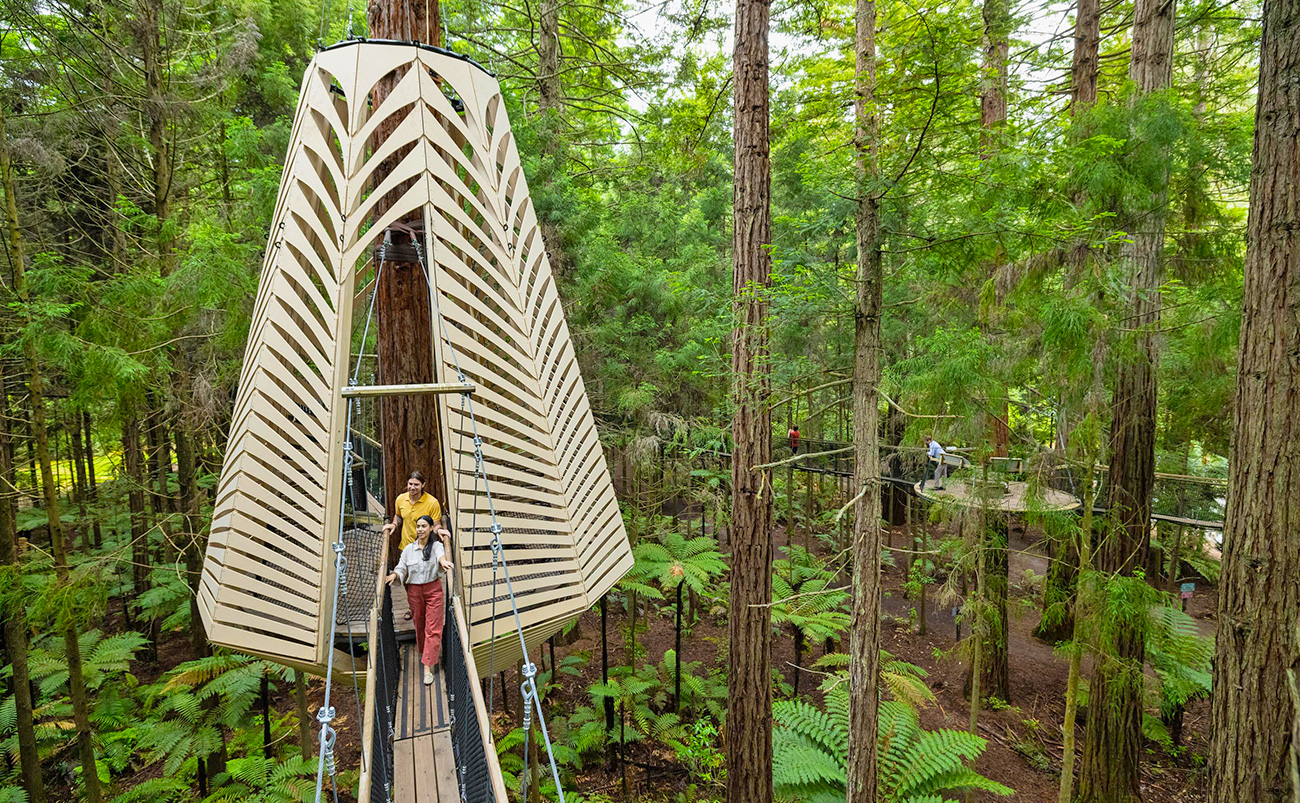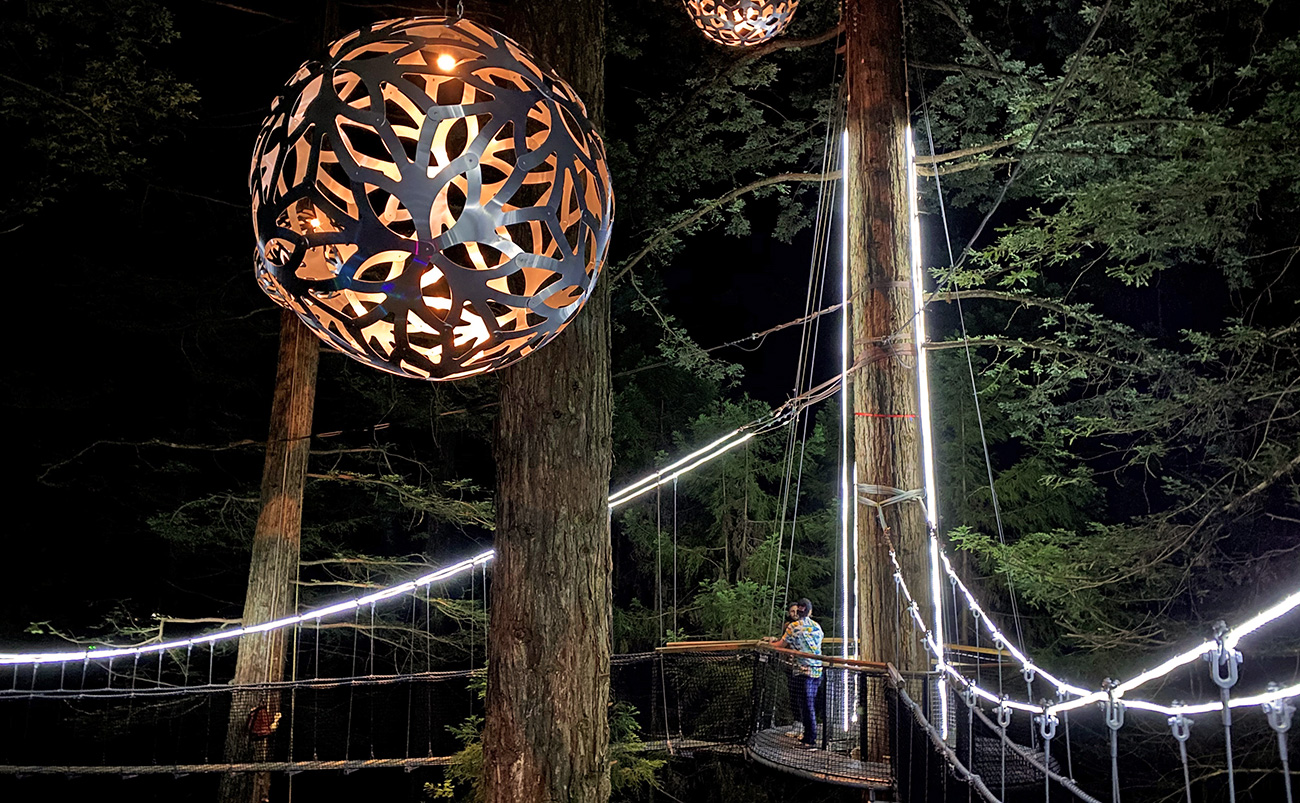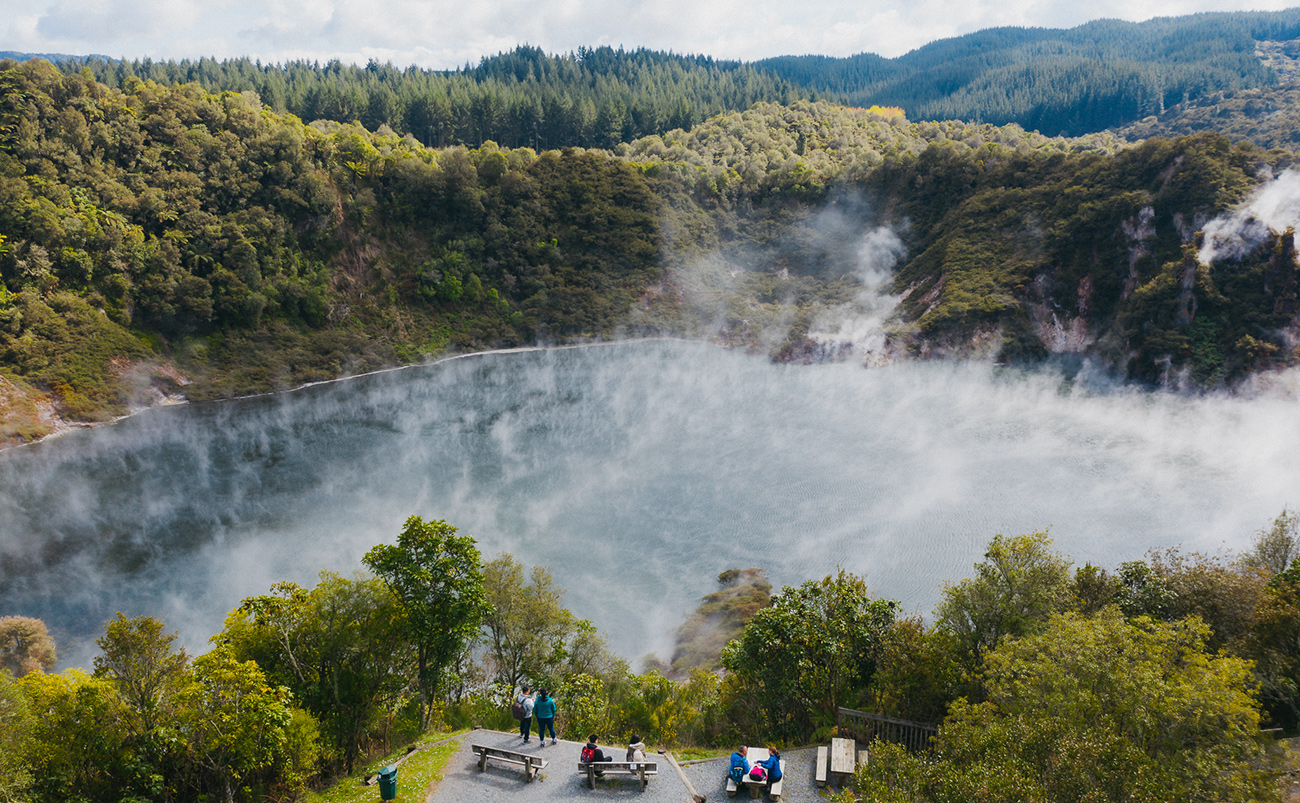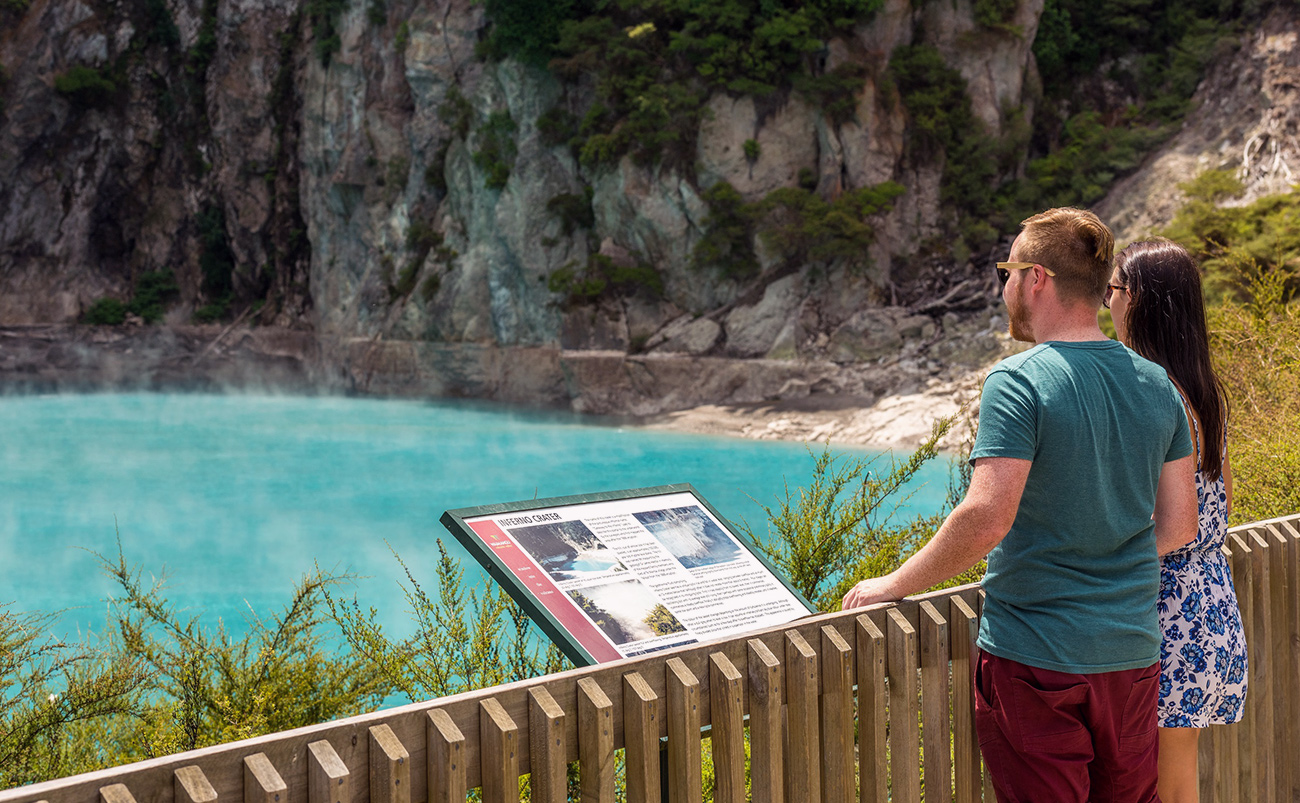Voted New Zealand’s Most Beautiful City in 1999, 2000 and 2002, Rotorua’s striking gardens, cobbled streets and fascinating mix of Maori and English Tudor architecture give the city a significant point of difference. Beyond the urban centre, a backdrop of geothermal steam, volcanic mountains and huge crater lakes remind you that this region rests immediately above the Pacific Ring of Fire.
Table of Contents
Awe-inspiring Earth Forces
Rotorua is a geothermal city where nature’s forces escape bubbling, steaming and hissing from the inner earth. Brilliant colours are a feature of Wai-O-Tapu Thermal Wonderland’s Artist’s Palette and Champagne Pool. Lady Knox Geyser plays every day. Also worth a visit is the amazing Waimangu Volcanic Valley, formed during the eruption of Mount Tarawera in 1886. Watch the famed Pohutu Geyser at Whakarewarewa Thermal Reserve, where scalding water shoots 30 metres into the sky as the geyser plays almost constantly. Hell’s Gate is another fascinating thermal park, featuring the only hot waterfall in the Southern Hemisphere. It also has an on-site spa complex specialising in traditional Maori massage (Mirimiri) and mud baths. Enjoy thermal pools for long hot soaks in most of Rotorua’s hotels and motels. Be pampered at the Polynesian Spa. Massage, mineral pools and skin treatments will renew your sense of wellbeing. Gain a different perspective of Rotorua from the air. Choose a flightseeing excursion over the gaping red crater of Mount Tarawera (now dormant).
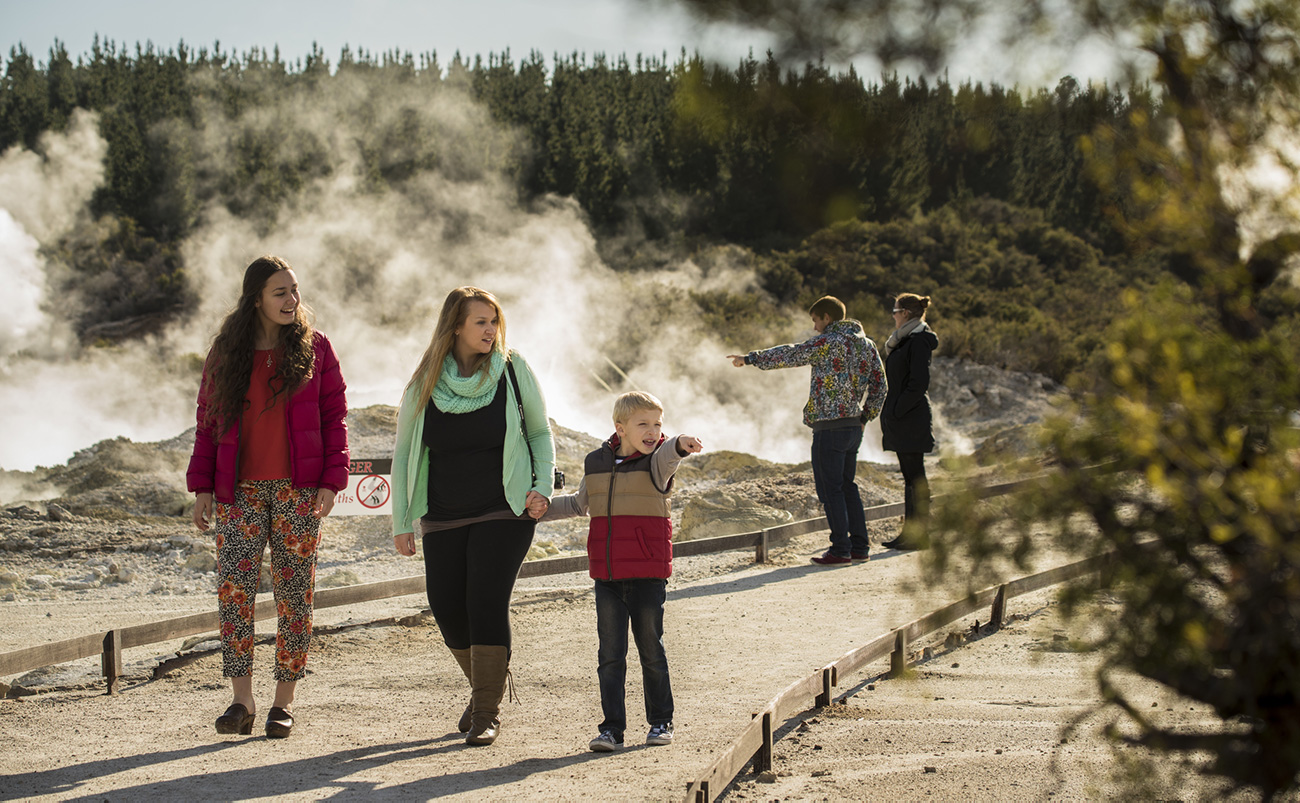
Intriguing History and Culture
As well as an astounding landscape, Rotorua has a rich cultural history. Take a journey back in time at the Tamaki Maori Village. In the depths of the forest, you will gain a clear picture of Maori lifestyle and traditions – from pre-European times to the present day. View, appreciate and learn about the traditional Maori arts preserved at the New Zealand Maori Arts and Crafts Institute. Speak with expert carvers and weavers and learn the history and processes involved with each art form. At the Rotorua Museum of Art and History you can watch a film show that brings alive the 1886 Mount Tarawera eruption. Bathe in a crystal clear hot spa at the Blue Baths. A museum in the old changing rooms showcases the building’s colourful past. Dine upstairs in the elegant 1930s tearooms, with views over the beautifully manicured Government Gardens. Visit the excavated sites at Te Wairoa, the village that was buried by the 1886 Mount Tarawera eruption. Enjoy hangi food and a Maori concert on Mokoia Island or at one the city’s hotels.
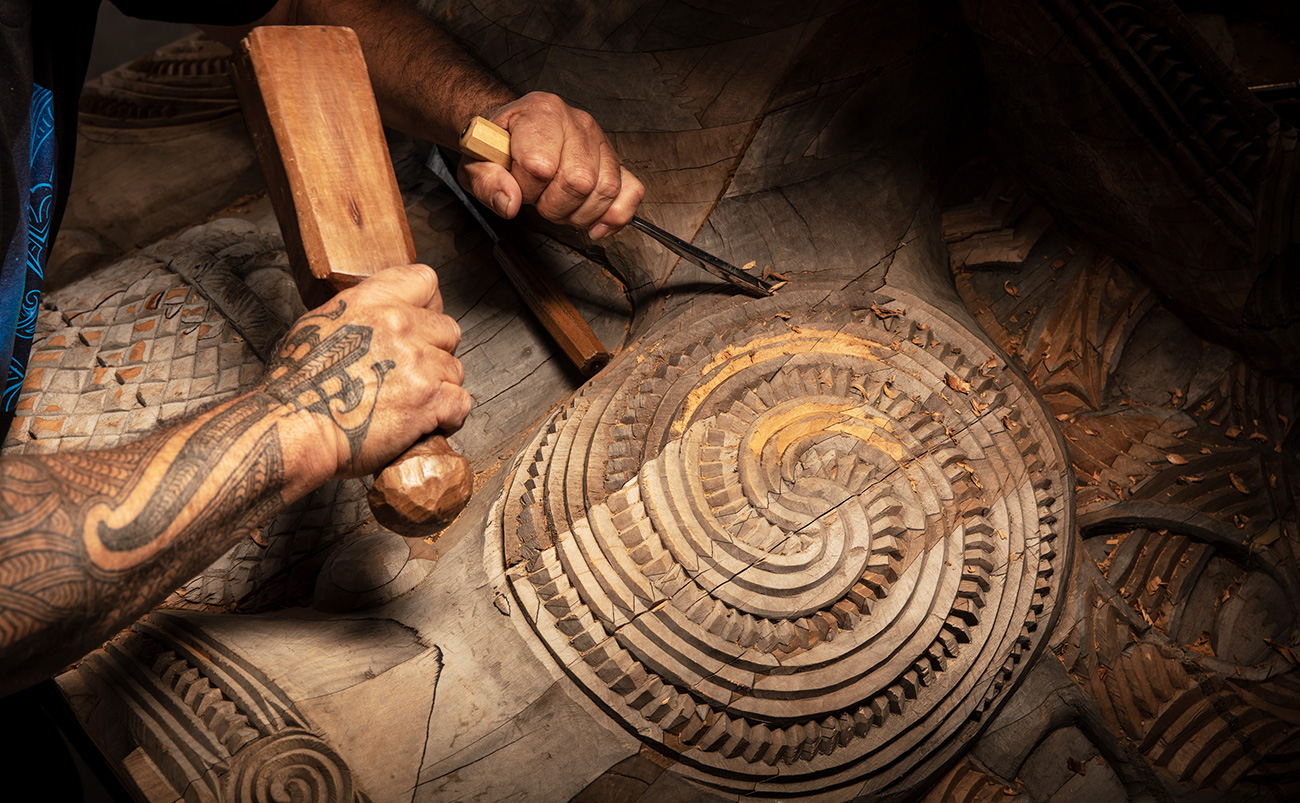
The Scenery is an Adventure in Itself
Forests, lakes and volcanic cones make Rotorua a brilliant place for walks, bikes and hikes. Visit the giant Californian redwoods in Whakarewarewa Forest. Walk, jog, bike or horse trek on the forest trails (bikes and horses are available for hire). Take a half-day 4WD tour to the summit of Mount Tarawera, then take a hike around the crater’s edge. A scree run down into the crater is the grand finale. Explore the region on foot. Tackle the 26 kilometre Rotorua Walkway that circles the city. Other walking options include the Blue Lake, Lake Okareka Boardwalk, Okataina Walkway, Tarawera Falls or Sulphur Point. Choose from a variety of lake and river excursions – cruise, kayak, raft or go white water sledging. Fly-fish the rivers and lakes – hiring a guide almost guarantees a catch. Rotorua has 15 fishable lakes, a myriad of crystal clear streams and four different species of trout
Cruise on the Lakeland Queen, a traditional paddlewheel vessel that offers lunch, morning/afternoon tea and dinner cruises on Lake Rotorua. Get aboard the 50ft catamaran that cruises Lake Tarawera
Blast across the Waikato River in a Hamilton jet boat (invented by a New Zealander) and discover the hidden geothermal valley of Orakei Korako. Get a taste for white water rafting. Brave the thrilling rapids of the Rangitaiki River or New Zealand’s highest commercially rafted waterfall on the Kaituna River. The famous Maori love story of Hinemoa and Tutanekai is brought to life with a day trip to Mokoia Island.
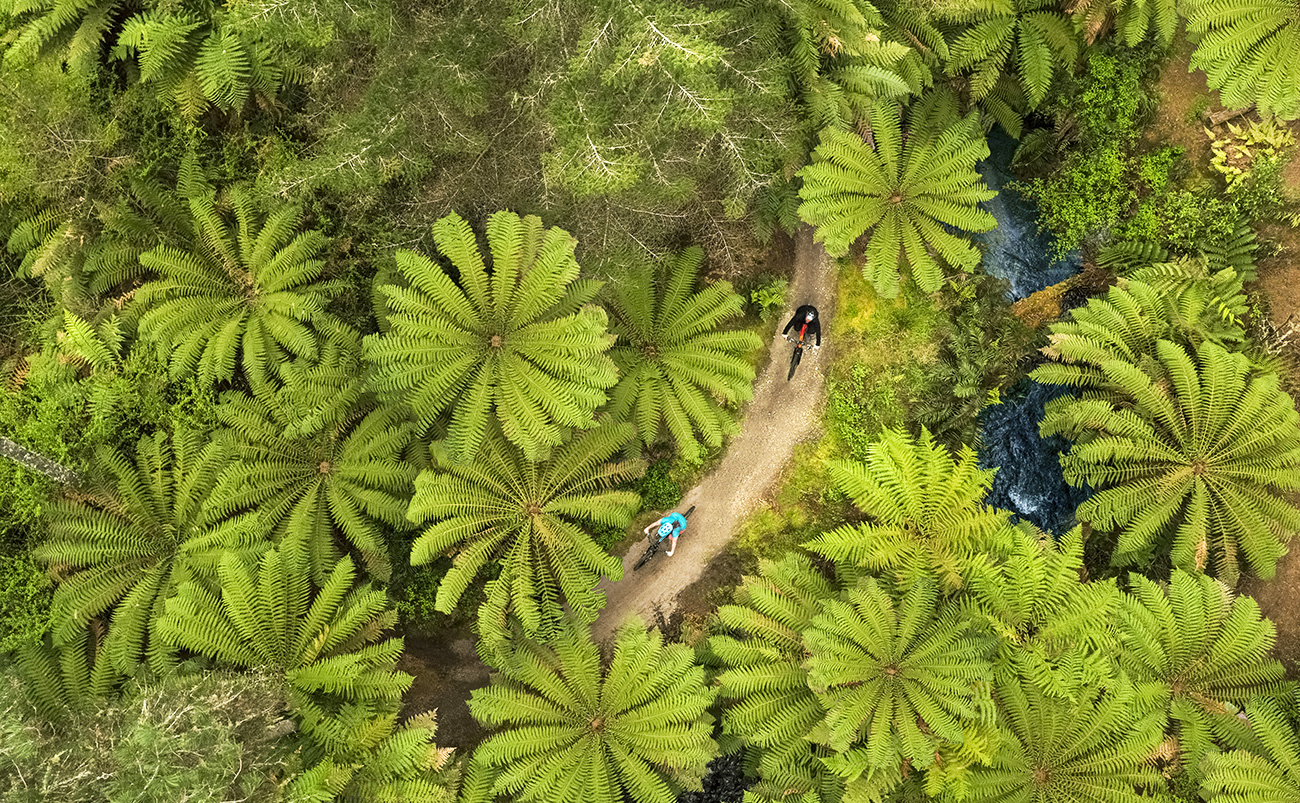
A New Slant on Family Fun
Rotorua is a place to expect the unexpected. The region’s natural assets provide huge scope for entertainment. Experience an action-packed, highly amusing farm show featuring trained rams, sheep dogs, sheep shearing, cow milking and lamb feeding. Visit Rainbow Springs, where the ponds are full of wild trout. See Kiwi Encounter, the new ‘conservation in action’ attraction; feed the fish, watch native birds and study the tuatara (a unique prehistoric reptile). Catch the gondola to the top of Mount Ngongotaha. Luge down the side of the mountain on one of three purpose-built tracks or scream your heart out on the Sky Swing. Climb inside a giant inflated ball and roll 150 metres down the side of a hill – it’s called zorbing. Enjoy a family soak at the Polynesian Spa. See the lions, trout, giant eels, waterfowl, deer and other interesting residents at Paradise Valley Springs.
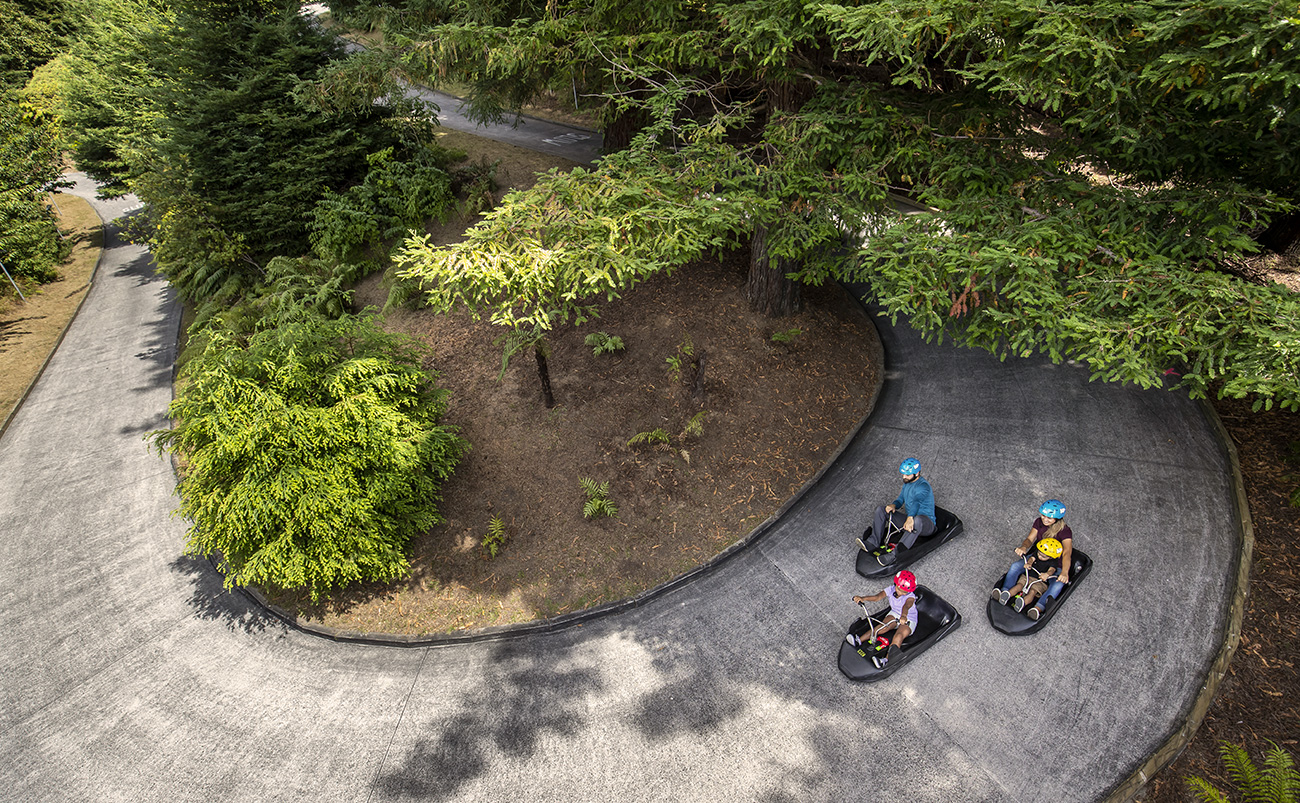
Best Time to Visit Rotorua
Summer (Dec-Feb)
In summer, the average daytime temperatures range from 21º to 29º C, with a few days peaking in the low thirties. The region is a favourite destination for domestic visitors – the schools are on holiday, as are the universities. The town is buzzing with activity and all kinds of water sports are happening on the crater lakes. If you’re planning to visit Rotorua at this time, you’ll need to book accommodation well in advance.
Autumn (Mar-May)
Autumn in Rotorua traditionally means misty mornings and falling leaves. Daytime temperatures can reach into the mid twenties, but the mornings and evenings are beginning to cool down (a great excuse to soak in the geothermal hot pools). A number of New Zealand holidays fall in this period – Easter and Anzac Day, plus two weeks of school holidays. It’s wise to book your accommodation ahead of time.
Winter (Jun-Aug)
June, July and August are definitely the months for crunchy, white ground frosts. In most cases, a frost signals the beginning of a clear, sunny day. Rotorua’s relatively high altitude (290 metres above sea level) keeps the air cool. The average daytime temperature range is 9º-15ºC. The shortest day (winter solstice) occurs around June 21.
Spring (Sep-Nov)
Although Rotorua is less windy than most other parts of the country and rainfall is moderate (spread across 117 days of the year), spring is probably the wettest, breeziest time. However, the geothermal activity is going strong, fuelled by the additional ground water.
